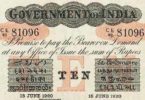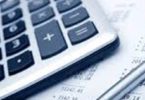The parties to joint venture is called_________
(a) Co-venturers
(b) Partners
(c) Principal & Agent
(d) Friends
General ledger adjustment account(s) is/are opened in ____.
(a) Debtors ledger
(b) General ledger
(c) Creditors ledger
Economic life of an enterprise is split into the periodic interval as per ________
(a) Money Measurement
(b) Matching
(c) Going concern
(d) Accrual
When adjusted purchase is shown on the debit column of the trial balance then
(a) Both opening stock and closing stock do not appear in the trial balance
(b) Closing stock is shown in the trial balance and not the opening stock
(c) Opening stock is shown in the trial balance and not the closing stock
(d) Both opening and closing stock appear in the trial balance
Writing of transaction in the ledger is called _______.
(a) Costing
(b) Balancing
(c) Journalizing
(d) Posting
The debts written off as bad, if recovered subsequently are
(a) credited to Bad Debts Recovered Account
(b) credited to Debtors Account
(c) debited to Profit and Loss Account
The purpose of accommodation bill is_______
(a) To finance actual purchase or sale of goods
(b) To facilitate trade transmission
(c) When both parties are in need of funds
On March 31, 2019 after sale of goods worth Rs. 2,000, he is left with the closing stock of Rs. 10,000. This is
(a) An event
(b) A transaction
(c) A transaction as well as an event
(d) Neither a transaction nor an event
Following is the example of external users:
(a) Government
(b) Owners
(c) Management
(d) Employees.
Interest on drawings is ________ for the business.
(a) Expenditure
(b) Expense
(c) Gain
X draws a bill on Y. X endorsed the bill to Z. ________will be the payee of the bill
(a) X
(b) Y
(c) Z
Related: Database quiz
Parties to a bill of exchange are
(a) Drawer
(b) Drawee
(c) Payee
(d) All of the above
Manufacturing account is prepared to
(a) ascertain the profit or loss on the goods produced
(b) ascertain the cost of the manufactured goods
(c) show the sale proceeds from the goods produced during the year
(d) both (b) and (c).
Accounting policies refer to specific accounting ________
(a) Principles
(b) Methods of applying those principles
(c) Both (a) and (b)
All the expenditures and receipts of revenue nature go to
(a) Trading account
(b) Profit and loss account
(c) Balance sheet
(d) Either to (a) or (b)
General reserve at the time of admission of a new partner is transferred to _______.
(a) Profit and loss adjustment account
(b) Partners’ capital accounts
(c) Revaluation account
(d) Memorandum revaluation account
“Business unit is separate and distinct from the person who supply capital to it”, is based on
(a) Money measurement concept
(b) Going concern concept.
(c) Business entity concept
(d) Dual aspect concept.
A withdrawal of cash from business by the proprietor should be credited to:
(a) Drawings Account
(b) Capital Account
(c) Cash Account
A proforma invoice is sent by ________
(a) Consignee to Consignor
(b) Consignor to Consignee
(c) Debtors to Consignee
(d) Debtors to Consignor
If the cheque is not presented for the payment upto the date of the preparation of the Bank Reconciliation Statement, then the balance as per Pass Book will be
(a) Higher than the balance shown by the cashbook by the amount of unpresented cheque.
(b) Lower than the balance shown by the cashbook by the amount of unpresented cheque.
(c) Same as shown by the cashbook.
Related: Intellectual property Rights Question Bank
All of the following are functions of Accounting except
(a) Decision making
(b) Measurement
(c) Forecasting
(d) Ledger posting
A Company wishes to earn a 20% profit margin on selling price. ________is the profit mark up on cost, which will achieve the required profit margin?
(a) 33%
(b) 25%
(c) 20%
A _____ is sent to a customer when he returns the goods.
(a) Debit note
(b) Credit note
(c) Proforma invoice
A suspense account facilitates the preparation of __________even when the _______ has not tallied.
(a) Ledgers; Trial balance
(b) Financial statements; Trial Balance
(c) Trial balance; Financial statements
(d) Journal; Trial balance
Outgoing partner is compensated for parting with firm’s future profits in favour of remaining partners. The remaining partners contribute to such compensation amount in ______
(a) Gaining Ratio
(b) Capital Ratio
(c) Sacrificing Ratio
(d) Profit Sharing Ratio
In ______ method, depreciation is charged by allocating depreciable cost in proposition of the annual output to the probable life-time output.
(a) Working hours method
(b) Replacement method
(c) Revaluation method
(d) Production units method.
Financial statements only consider
(a) Assets expressed in monetary terms
(b) Liabilities expressed in monetary terms
(c) Assets expressed in non-monetary terms
(d) Assets and liabilities expressed in monetary terms
State the case where the going concern concept is applied?
(a) When an enterprise was set up for a particular purpose, which has been achieved, or to be achieved shortly.
(b) When a receiver or liquidator has been appointed in case of as a company which is to be liquidated.
(c) Fixed assets are acquired for use in the business for earning revenues and are not meant for resale.
(d) When an enterprise is declared sick.
Related: Law of Agency Exam Questions / Answers
Noting charges are paid at the time of _______of a bill.
(a) Retirement
(b) Renewal
(c) Dishonour
A purchased a car for Rs.5,00,000, making a down payment of Rs.1,00,000 and signing a Rs.4,00,000 bill payable due in 60 days. As a result of this transaction
(a) Total assets increased by Rs.5,00,000.
(b) Total liabilities increased by Rs.4,00,000.
(c) Total assets increased by Rs.4,00,000.
(d) Total assets increased by Rs.4,00,000 with corresponding increase in liabilities by Rs.4,00,000.
If two or more transactions of the same nature are journalised together having either the debit or the credit account common is known as
(a) Compound journal entry
(b) Separate journal entry
(c) Posting
Whenever errors are noticed in the accounting records, they should be rectified
(a) At the time of preparation of the trial balance.
(b) Without waiting the accounting year to end.
(c) After the preparation of final accounts.
(d) In the next accounting year.
Consignment account is
(a) Real account
(b) Personal account
(c) Nominal account
An amount of Rs.200 received from A credited to B would affect____________
(a) Accounts of A and B
(b) A’s account
(c) Cash account
(d) B’s account.
Depreciation of fixed assets is an example of _______ expenditure.
(a) Revenue
(b) Deferred revenue
(c) Capital
Which financial statement represents the accounting equation, assets = Liabilities + Owner’s equity:
(a) Income Statement
(b) Statement of Cash flows
(c) Balance Sheet






